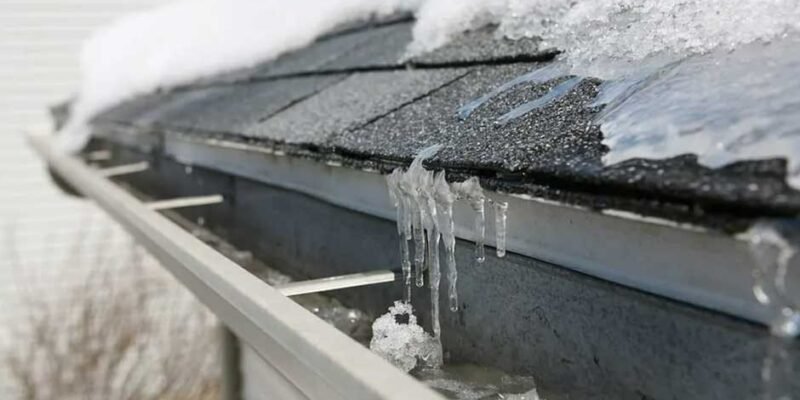
How to Prepare Your Roof for Harsh Weather?
Proper preparation can protect your roof from the damage that harsh weather often causes. Whether facing storms, snow, or extreme heat, taking proactive steps helps extend the life of your roof. This guide provides clear instructions to get your roof weather-ready, helping to avoid costly repairs and keep your home safe.
Inspect Your Roof Regularly
Start by inspecting your roof thoroughly. Look for loose or damaged shingles, broken flashing, and signs of wear like cracks or buckling. These small issues can turn into major problems during bad weather. Perform inspections at least twice a year; once in the fall and once in the spring, or after significant storms. Regular inspections are made easier with a well-placed and easily accessible roof hatch.
Climb up with proper safety equipment or hire a professional roofer to perform the inspection. Check for leaks inside your home as well. A wet spot on your ceiling could indicate damage requiring immediate attention.
Clean the Roof Surface
Debris like leaves, twigs, and moss create problems when left on the roof. Use a leaf blower or soft broom to clear these items. For stubborn moss or algae, apply a gentle cleaning solution made of water and a mild detergent. Rinse it off with a garden hose.
Avoid using power washers as they can strip protective layers from shingles, making them less effective in resisting water. Cleaning the roof also reduces moisture retention, which can prevent snow and ice from accumulating excessively.
Trim Overhanging Branches
Nearby trees can become hazards during storms. Strong winds may cause branches to scrape against your roof, damaging shingles or gutters. Falling limbs can puncture the surface or add heavy debris.
Trim back branches that overhang the roof or are too close to your home. This also reduces shade, which helps prevent moss and algae growth. Regular tree maintenance ensures better roof protection in severe weather conditions.
Reinforce Gutters and Downspouts
Gutters and downspouts play a key role in managing water flow. Clogged or damaged gutters can lead to water pooling on the roof, causing leaks and ice dams.
Clean the gutters thoroughly, removing leaves and debris. Check for loose or broken sections and reattach or replace them as necessary. Use gutter guards to minimize future buildup. Ensure downspouts direct water far enough away from your foundation.
Seal Any Vulnerable Areas
Inspect areas around chimneys, vents, and skylights. These spots are prone to leaks if not sealed properly. Apply a waterproof sealant or flashing tape to secure these areas.
For extra protection, consider installing weatherproof underlayment beneath the shingles. This layer adds a barrier against water and snow. Focus on reinforcing edges and seams, which are common weak points during storms.
Install Snow and Ice Guards
In areas prone to snow, snow guards help prevent large sheets of ice or snow from sliding off the roof suddenly. This protects your gutters and reduces the risk of injury.
Place the guards evenly across the roof’s surface to distribute weight and ensure safe melting. Combined with a clean roof and functional gutters, these guards minimize damage caused by snow buildup.
Apply Protective Coatings
A weather-resistant coating can enhance your roof’s ability to withstand extreme weather. Many coatings protect against UV rays, rain, and temperature fluctuations.
Choose a product suitable for your roof type, whether asphalt, metal, or tile. Follow the manufacturer’s instructions for application. Coatings not only add durability but also improve the roof’s overall appearance.
Consider Metal Strips for Algae Control
Copper or zinc strips installed along the roof’s ridge can prevent moss and algae growth. When rainwater runs over these strips, it releases small amounts of metal that inhibit fungal development.
These strips are simple to install and low-maintenance. Be sure to position them correctly for maximum effectiveness.
Test and Strengthen Ventilation
Proper ventilation helps maintain the temperature of your roof and attic, reducing the risk of ice dams or overheating. Inspect vents for blockages and clean them as needed.
Consider adding ridge or soffit vents if airflow seems inadequate. Balanced ventilation keeps your roof healthier and better prepared for extreme conditions.
Schedule Professional Maintenance
Some tasks, like inspecting for structural issues or applying weatherproofing materials, are best left to professionals. Roofers can identify problems that might not be visible to the untrained eye.
If you’re in the Darwin area, visiting roofrepairdarwin.com.au can connect you with expert roofing services that specialize in preparing and repairing roofs for extreme weather
Reach out to a trusted roofing service to schedule an annual checkup. If you need recommendations, visit homepage of your preferred roofing contractor to explore their services. This ensures your roof is in optimal condition before harsh weather strikes.
Emergency Preparations for Storms
Keep an emergency roof repair kit handy. Include tarps, nails, a hammer, and a ladder. These tools can help you respond quickly to minor damage before it worsens.
During a storm, stay safe by avoiding the roof altogether. Focus on monitoring leaks and mitigating damage from the inside. Once the weather clears, assess and address any visible problems immediately.
Long-Term Maintenance Tips
Preparation isn’t a one-time task. Regular maintenance reduces the impact of harsh weather over time. Clean your roof seasonally, inspect it after major storms, and address issues promptly.
A well-maintained roof not only protects your home but also saves money by reducing the need for expensive repairs. By staying proactive, you can extend the lifespan of your roof and keep your home safe year-round.
Proactively preparing your roof is an investment in your home’s safety and value. Small, consistent efforts go a long way in protecting your property from harsh weather conditions.






